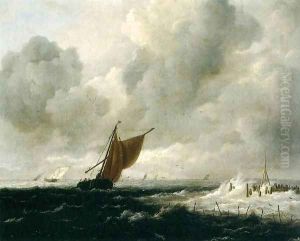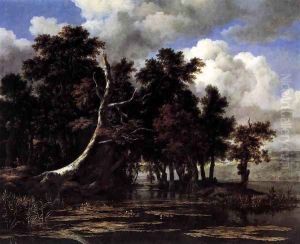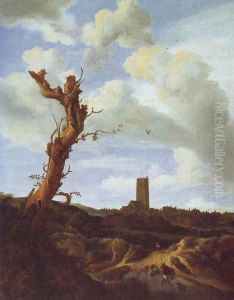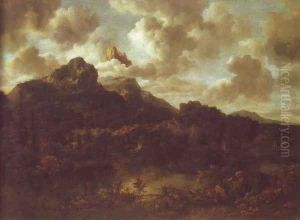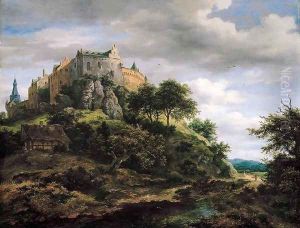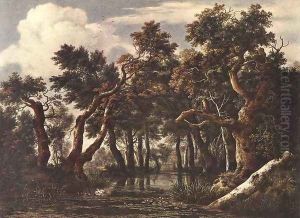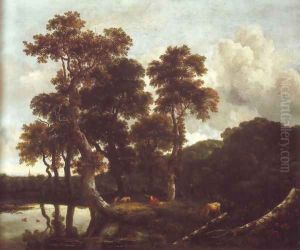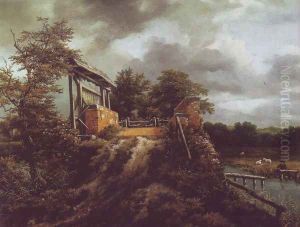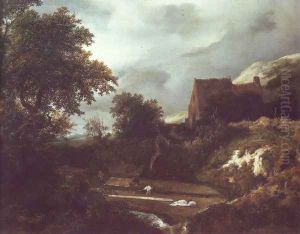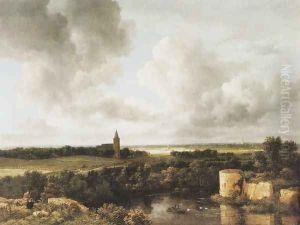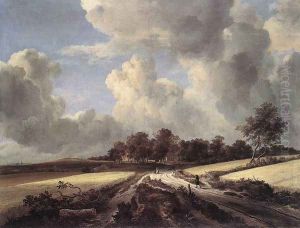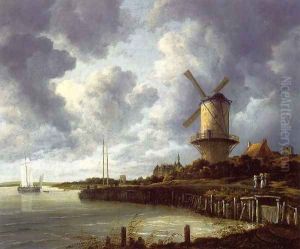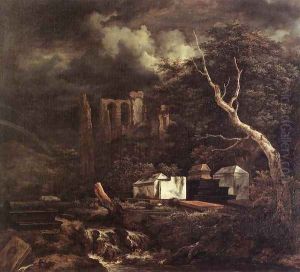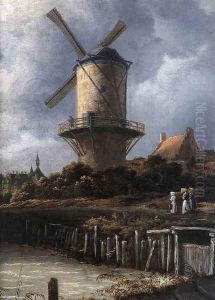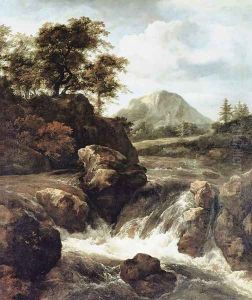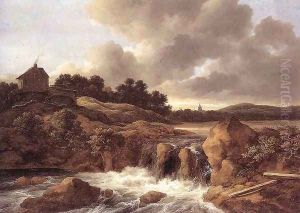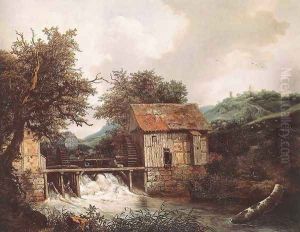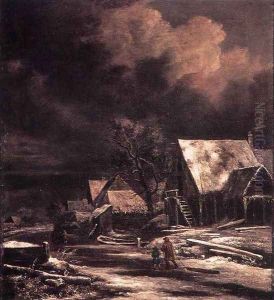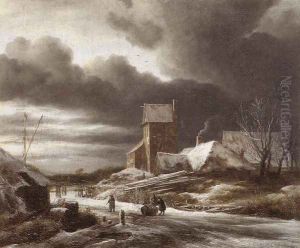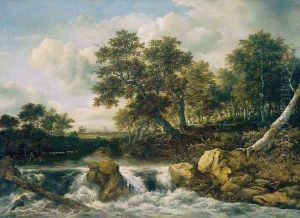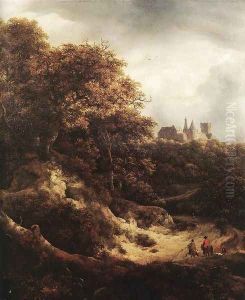Jacob Van Ruisdael Paintings
Jacob van Ruisdael was a Dutch painter, draughtsman, and etcher, who is considered one of the foremost landscape artists of the 17th century Dutch Golden Age. He was born into a family of artists in Haarlem, Netherlands, with his father Isaack van Ruysdael being a painter and his uncle Salomon van Ruysdael also being a well-known landscape artist. Not much is known about his early life and training, but he likely learned painting from his father and uncle.
Jacob's work is known for its dramatic skies, innovative compositions, and meticulous attention to detail. He depicted a wide variety of landscape subjects, ranging from forests, dunes, and river valleys to city views and seascapes. Van Ruisdael's landscapes often feature ruins, watermills, and wheat fields, evoking a sense of the sublime and the vastness of nature.
Some of his most famous works include 'View of Haarlem with Bleaching Grounds', which shows a panoramic view of the city with the linen bleaching fields in the foreground, and 'The Jewish Cemetery', which combines natural beauty with a sense of melancholy and the transience of life. Throughout his career, van Ruisdael also produced seascapes that capture the tumultuous character of the North Sea.
Despite his success as an artist, van Ruisdael was not financially prosperous, and there are indications he may have struggled with economic difficulties. He never married and led a relatively solitary life. He moved to Amsterdam in the mid-1650s, where he continued to work and teach. He was buried in the Westerkerk in Amsterdam in 1682.
Jacob van Ruisdael's influence on landscape painting was profound, and his works were collected throughout Europe. His approach to landscape influenced not only his contemporaries but also generations of future artists, including the Romantic painters of the 19th century. Today, his paintings are held in high esteem and can be found in major museums around the world, celebrated for their emotional depth and technical mastery.
